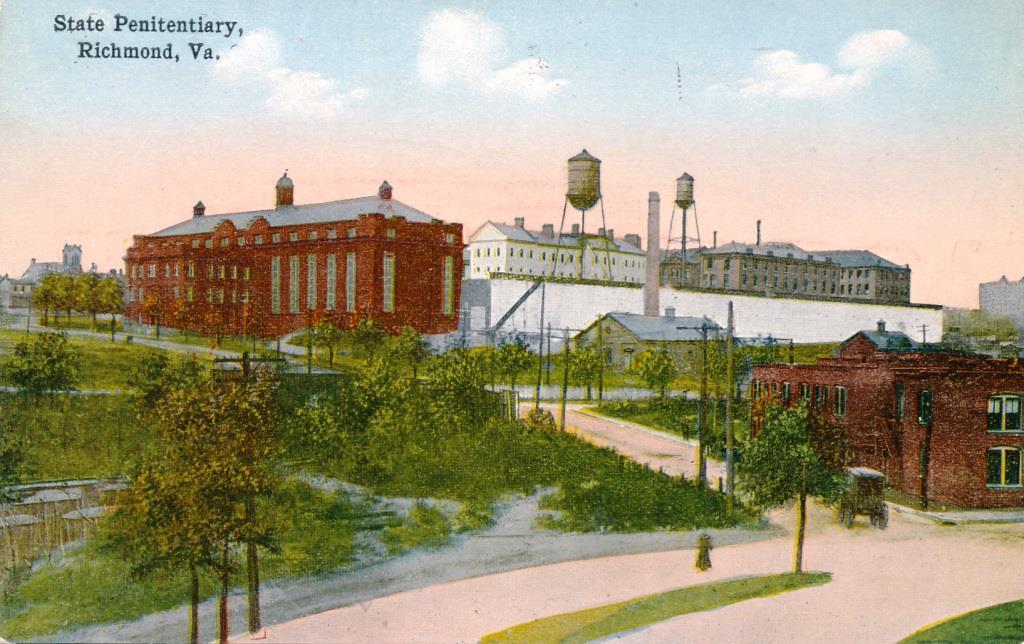Working as a reference archivist, we sometimes get that one phone call that really piques our interest. And once you get on the case, you just can’t let it go. Well, I received a phone call from a patron inquiring as to where a prisoner at the Virginia State Penitentiary would have been buried if he died in the prison. Her father wanted to visit the grave as he suspected no one had done so since the prisoner was laid to rest. Unfortunately, I did not have the answer for her; my colleagues did not have an answer for her. I was unable to find any scholarship that had definitive answers. So with my curiosity piqued, and a want to help this gentleman visit his great-grandfather for the first time, I delved into the case of James D. Wise.
James D. Wise was born in Washington County, Virginia somewhere in the 1820s. He married Nancy Jordan in 1854, and by 1870, they were living in Russell County, VA with eight children: William, James, Lucinda, Martha, Sarah, Nancy, Samuel, and Robert. But by 1880, James appears in the census living alone but still married, while Nancy appears in Kentucky with several of her children and listed as divorced. Unfortunately the 1890 census no longer exists, however Nancy appears back in Russell County by 1900 listed as a widow with James nowhere to be seen. What happened?
The patron, Wise’s descendant, provided some necessary context to the case we were exploring. She said that at some point in the latter part of the 19th century, James D. Wise was tried for bigamy and placed in the Virginia State Penitentiary. She was right. In 1892, James, using the alias Marshall Wise, was tried in Russell County for marrying another woman while still married to Nancy Jordan.
On October 5th, 1892, James Wise was brought before the Russell County Court to be tried for bigamy. He testified that he had not heard from his first wife, Nancy Jordan, in seven years; however, the court found that though he and Nancy had been separated for some time, he was still legally married to Nancy when he married his second wife.
On December 7th, 1892, James Wise was found guilty of the felony of bigamy and was sentenced to three years served at the Virginia State Penitentiary. On December 15th, 1892, he was delivered to the penitentiary to begin his three year sentence.
By May 6th 1895, James Wise unfortunately passed in the Virginia State Penitentiary hospital from La Grippe (influenza) and old age.
Establishing time of death was important to uncovering his burial site, if there was a site at all. In 1877, the General Assembly passed an act directing the Penitentiary Board of Directors to find a suitable plot outside Richmond City limits to act as the burying ground for convicts. By 1878, the legislature appropriated $400 for the acquisition of such a plot, however until a purchase could be made, the penitentiary was free to continue burying the deceased on the penitentiary grounds.
In several annual reports from the Directors of the Penitentiary, the process for securing a suitable plot “proved to be abortive.” In the 1881 annual report, there had been no purchase for the convict burial ground, and by 1883, the state had other plans for the unclaimed remains of penitentiary inmates.
The 1883 Code of Virginia legalized the shipment of unclaimed remains to the state’s medical schools. Based on several Virginia newspapers, by 1895, the State Anatomical Board was at the scaffold of executed prisoners collecting remains, even, in the case of at least one young Black man, if there was family of the deceased present to take the body for proper burial.
Now, I can’t say for certain whether or not James Wise’s remains were sent to one of the medical colleges, however researching his case certainly evolved into uncovering some unsavory parts of Virginia’s history. Because the Virginia State Anatomical Board records were not permanently retained, it is difficult to know how many convicts, patients of mental health facilities, patrons of almshouses, etc. met this same fate upon their death. I have not given up on locating Mr. Wise’s final resting place, but this case has certainly taken some unexpected turns. Stay tuned for updates.









